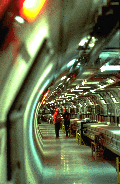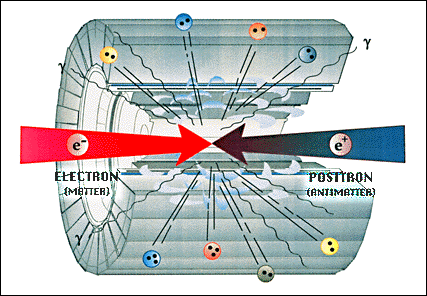
| The LEP machine at CERN is the largest particle collider in the world. In a ring 27 km in circumference, buried about 100 m underground, bunches of electrons and positrons (antielectrons) race round in opposite directions as they are accelerated to almost the speed of light. |
| When an electron and a positron come close enough, they disappear in an act of mutual destruction to form a burst of energy. Almost immediately, this energy changes back into particles, just as matter must have formed from energy in the early Universe. |

|
LEP began operation in the summer of 1989 and for six years the collision energy of its electrons and positrons was tuned exactly to the value needed to produce the neutral carrier of the weak force, the Z0. Since the autumn of 1995, the energy has been increased to almost double its earlier value. In the summer of 1996, LEP ran at the exact value needed to produce pairs of the charged carriers of the weak force, the W+ and W- particles. Detection of millions of Z0s and hundreds of Ws has allowed the LEP experiments to make extremely precise tests of the Standard Model of particles and their interactions.